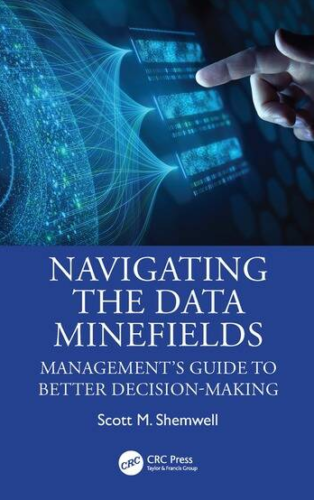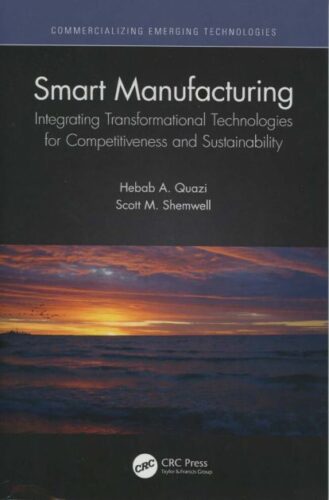Smart ProSim
Britannica defines computer simulation as the use of a computer to represent the dynamic responses of one system by the behavior of another system modeled after it. A simulation uses a mathematical description, or model, of a real system in the form of a computer program.
“Conventional wisdom says that we learn from our errors, but errors in the business world can be prohibitively costly. To truly understand how our complex business organization’s function requires different tools than managers typically have been given. One tried and true method is to build models.”
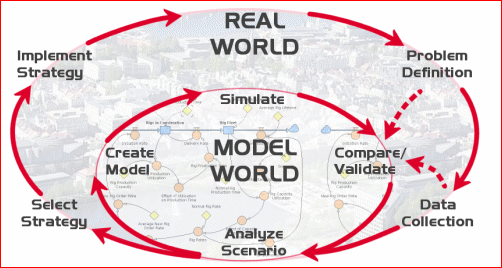
Smart ProSim Codified
Dr. Shemwell has been addressing process workflow optimization for almost 40 years. A large number of articles are available on the Body of Knowledge and can be found on our Publication page. The two books depicted below: Navigating the Data Minefields (2025) and Smart Manufacturing (2023) address the role process simulation plays in our ‘Smart’ Artificial Intelligence (AI) world. Moreover, our forthcoming book (based on our November 15, 2025 Blog, The Transformation of Our Spreadsheet Society: Moving Towards Nonlinear, Big Data & AI Enabled Problem Solving will continue to expand on this and other methodologies to capture the maximum value from data.
Our Solution
We first developed a Business Process Simulation in the 1990s designed to answer the “What If” question. As early as 2004 our seminal research, Roadmap to Enterprise Optimization: A Guide to the Impact of Information Driven Field Operations on the Petroleum Corporation determined that up to 50% saving can be attributed to advanced integrated project management techniques that include scenario simulations.
Major Projects include:
- Y2K network modeling to assess risk exposure to production failures due to Internet device date driven malfunctions.
- Refinery Remediation resulting in almost 20% reduction in project time and direct cost savings
- Product Life Cycle Management focused on Value Chain Analysis to improve Time to Market for heavy industrial goods
- Supply Chain Optimization
- Process Manufacturing Production Optimization
- Discrete Manufacturing ‘Floor’ Workflow Optimization
- Drilling Risk Assessment (details follow)
Value Proposition
An independent study found that business process simulation Return on Investment (ROI) includes:
Reduction in operating expenses of 8%
Increase in utilization of 9%
Increase in operational availability of 2.5%
Production increase of 11%
With an overall Internal Rate of Return of over 400%
We developed our solution using Systems Dynamics, “born at MIT Sloan in the 1950s and developed by Prof. Emeritus Jay W. Forrester. System Dynamics helps us understand, design, and manage change. Using data and technology, System Dynamics models the relationships between all the parts of a system and how those relationships influence the behavior of the system over time.”
Overview of the Drilling Risk Assessment (D-RAT) Simulation Model
We provide this risk assessment model as an example/demo for several reasons. First, it is a good example of a complex, data rich capital allocation assessment. Additionally, the vast majority of our models are proprietary. This model has been used for several years and is ‘generic.’
In this section, we will step through the model development process and culminate with a video of the simulation in operation.
Problem Background
Oil and gas “drilling is ultimately a capital allocation process. Once financial capital has been set aside or reserved to construct a well, those funds are not available for other projects. But does this matter today where good projects arc on hold not for want of financial assets, but because of equipment, material and human shortages? The answer is yes, asset utilization always matters regardless of the level of activity in the industry.”
According to Scott Shemwell, “A Structural Dynamics based inference engine, a documented process model, including feedback, can be modeled, enabling engineers, management and geoscientists to manage a large amount of (Big) data and variables in a single model. The Pareto Optimal solution approach towards asset utilization capitalizes on proven portfolio management techniques to appreciate considerable value to the firm.”
Process/Technology/Data Workflow
We start with the development of the problem or process we are addressing. Please, note that a level of detail is required and that takes the effort of a true Subject Matter Expert (SME). In this case we worked with a select group of drilling engineering and geologist for very large oil and gas organization. Their main function was to work on ‘troubled’ well worldwide where issues demanded significant expertise and experience.
This process began before the well was started or ‘spudded.’ One of the goals was to see if the drilling timeline could be shortened. In other words, complete the well and bring oil production online sooner. If this can be accomplished in a safe and in accordance with environmental and other regulatory constraints, significant value can be added from this capital investment. Finally, the ‘ability to influence cost’ is greater earlier in the project life cycle. Once the project leaves the drawing board, this becomes much more difficult.
The Oil/Gas Well Life-Cycle figure on the left describes this process. On the right, the Drilling Risk Assessment Process addresses the various project requirements, i.e. engineering, geoscience, finance, etc. including data third-party efforts, such as the drilling company. It consists of two phases, Preliminary and the Final Decision.
At the Preliminary Milestone, Go-No Go is quickly assessed at a high level. If agreed, the final much more detail phase commences. At this point, the risk associated with the project has been robustly tested against a number of scenarios and an expected return is benchmarked. Significant data feeds and best practices/lessons learned have been fed to the model.
This simulation model uses Artificial Intelligence fed by Big Data to arrive at a CAPEX recommendation for management. It is very effective.
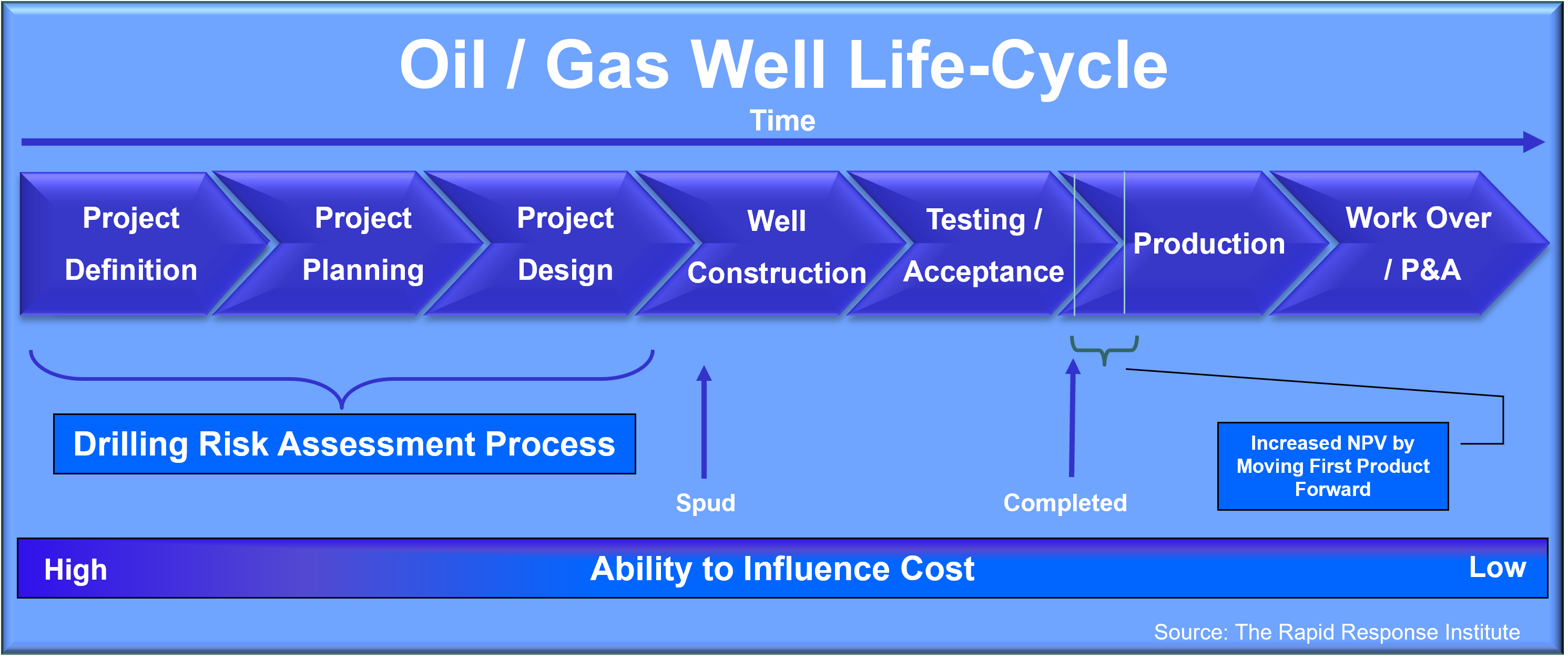
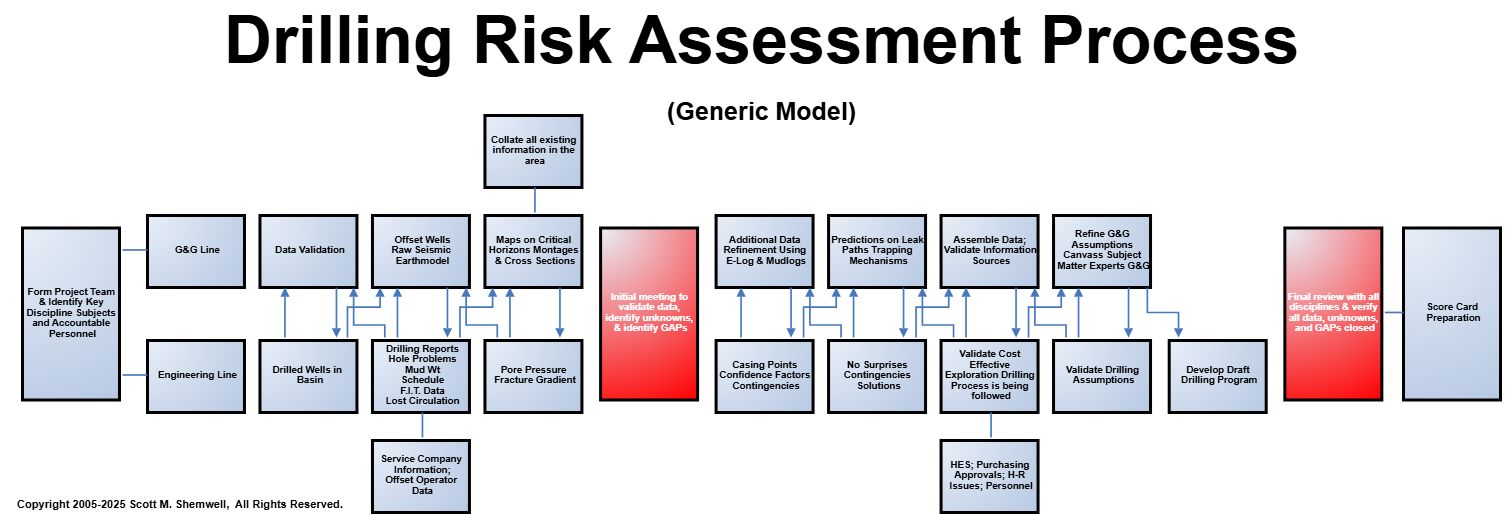
Software Logic is developed for the Drilling Risk Assessment Process. Subjective scenarios are managed by changes in a set of variables. In the case of this model, over 30. This capability is at the heart of the value from running a large number of scenarios–Pareto optimality is approached.
Finally, these analytics are depicted in the Output Dashboard, where the human decision maker is presented with a small set of outputs that are manageable. SMEs and executives can run as many scenarios as they like and compare and contrast the outputs as input into the final CAPEX decision.
Simulation Workflow
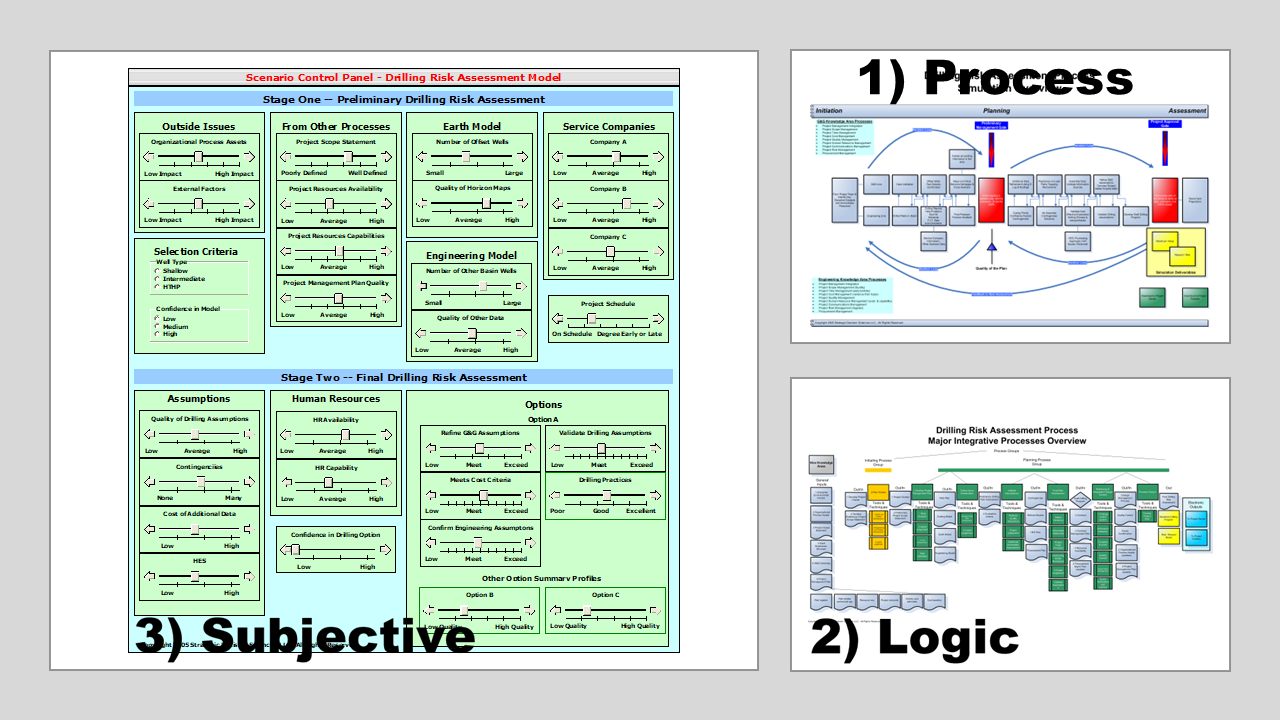
Output Dashboard
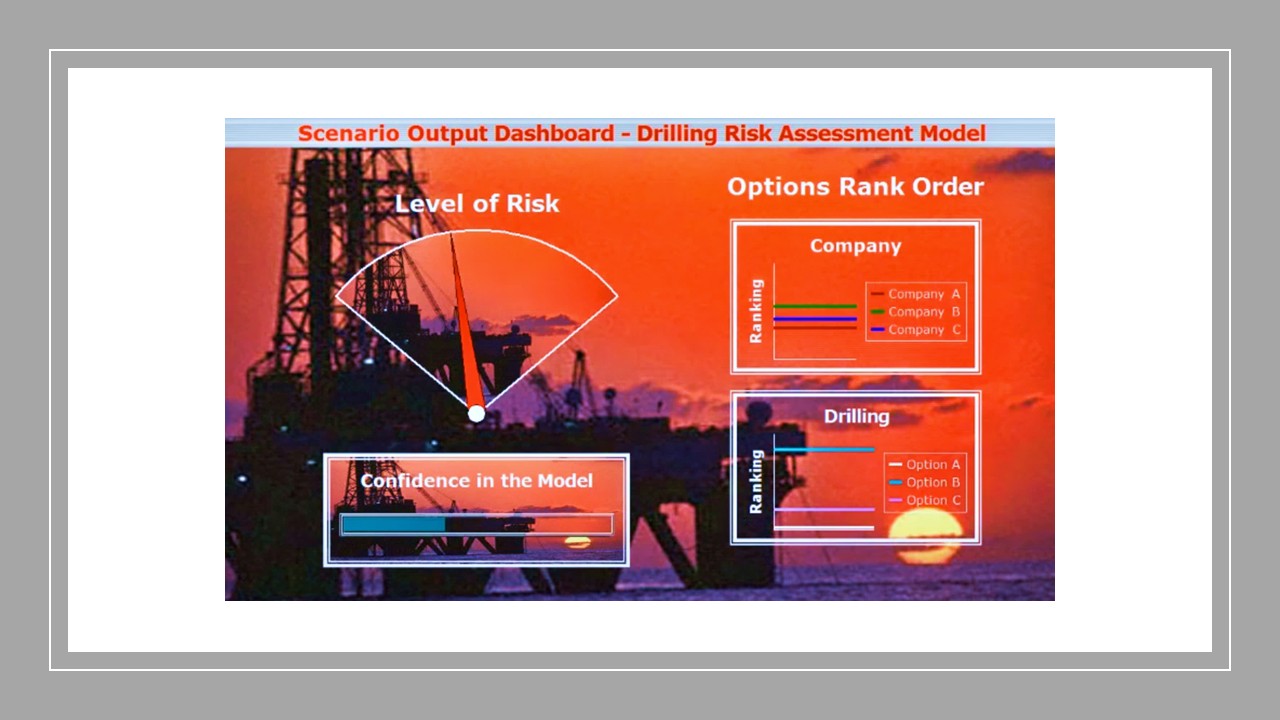
The model captures massive data and as many change variables as desired. The output reduces this complexity to a decision support that individuals can assess.
It DOESNOT reduce the fidelity of the data or process(es). This solves one of the real challenges in our data intensive world where decisions can have major impacts on the organization and its ecosystem.
Drilling Risk Assessment Simulation Modeling
The following outlines the modeling process for a drilling risk assessment model. The purpose of this assessment is to determine the sensitivities of a large number of variables to the overall safety and economic value for a challenging oil well during the Risk Assessment Phase of the project.
The goal is to help decision makers with the Go-No Go determinization pre-AFE.
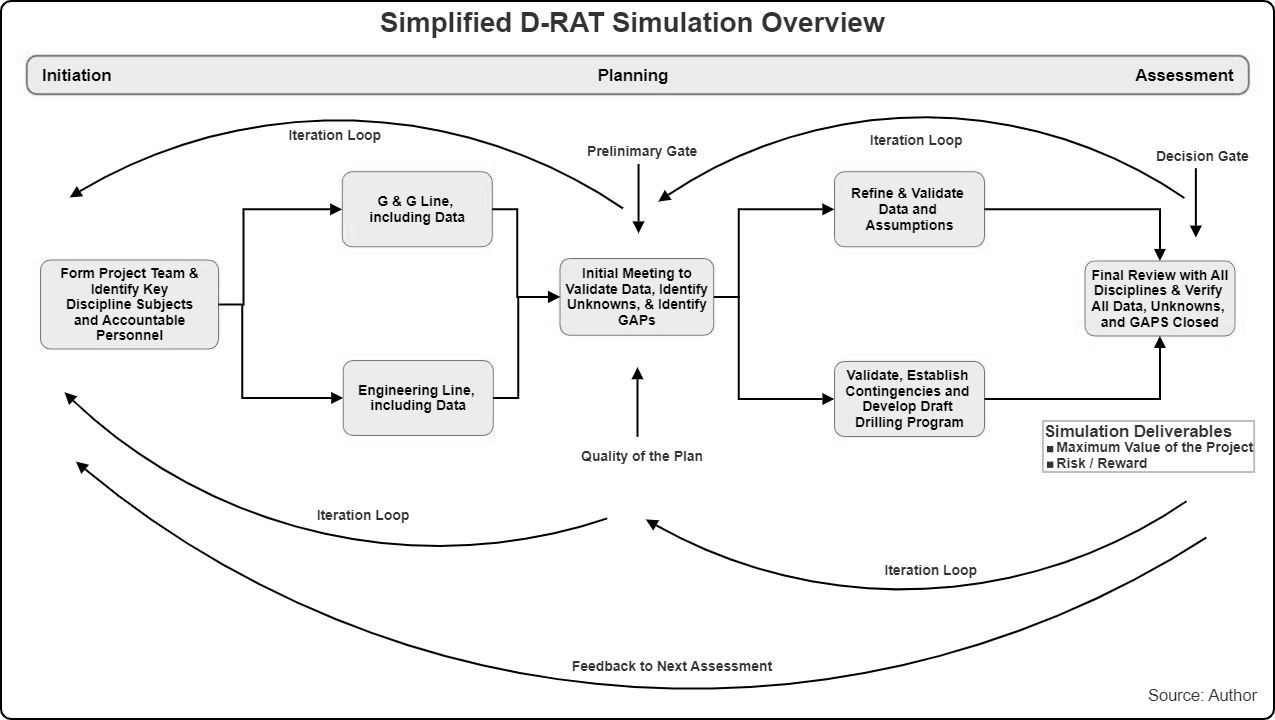
Process Map Framework
As previously noted, the first step in the development of the model (after the workflow is established) is the process map. This framework provides the modeler(s) with the roadmap necessary to popular the simulation inference engine.
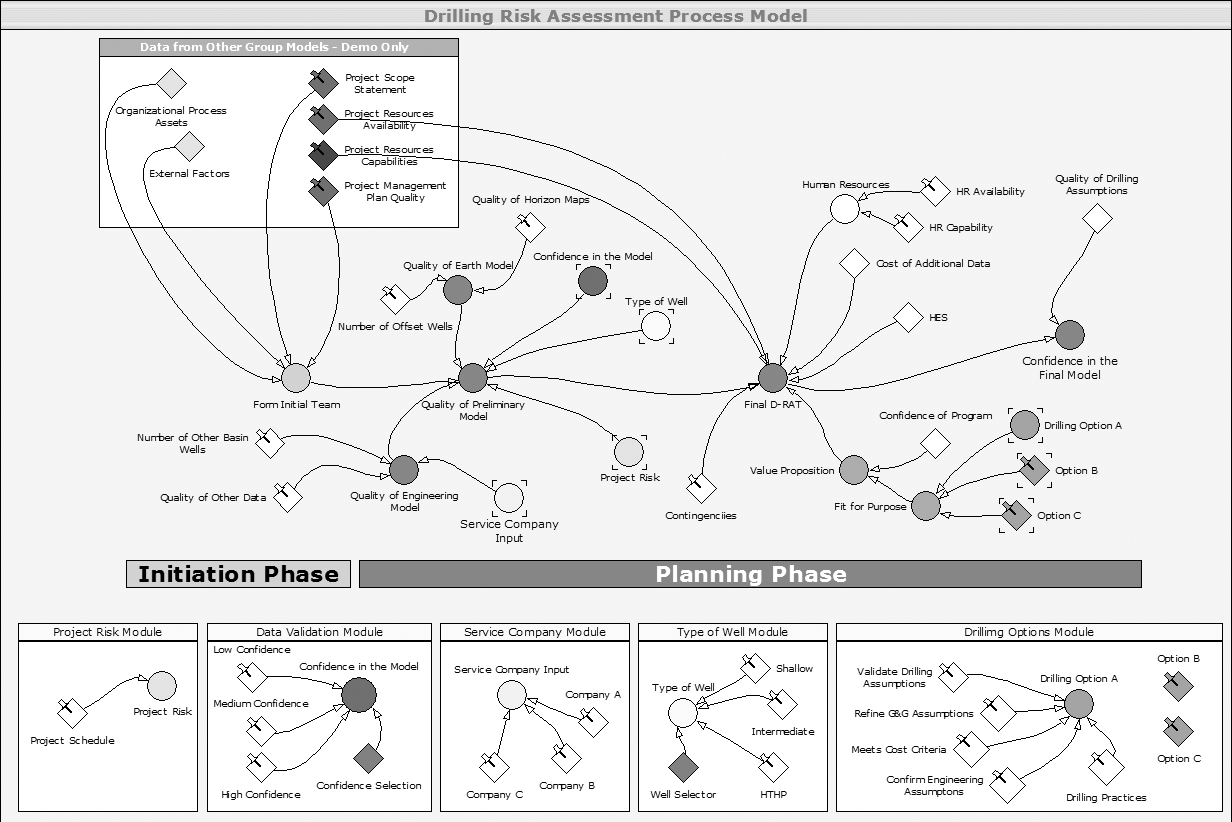
Process Simulation Engine
The simulation inference engine modeling interface is a workflow process modeling tool. Each element in the model has data and an algorithm associated with it. The modeling process is a tier technique and will be built from the layered processes described in this document
The value of testing ‘What If’ scenarios and sensitiveness prior to “cutting steel” or making major decisions is substantial. Errors are too costly to be wrong on major decisions. This is the approach that NASA takes when making real-time orbital decisions —coupling the real world to the model world.
This is a powerful cost-effective decision support tool. Take a look at the video for a full discussion and an example of the simulation in action.
Non-technical individuals will find it easy to use and will enable them to focus on the problem and not the technology.

